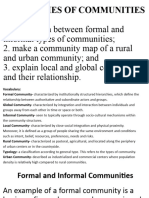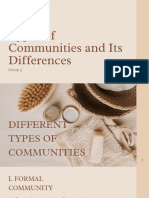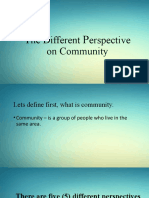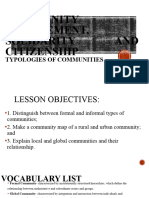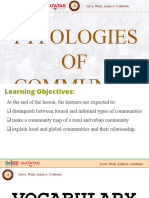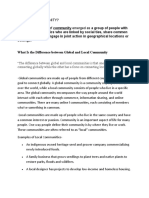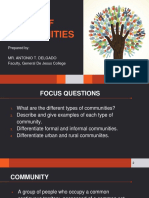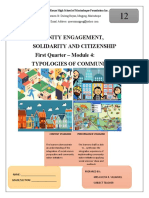0% found this document useful (0 votes)
59 views47 pagesCSC Lesson 4
The document outlines various typologies of communities, including formal, informal, urban, rural, global, and sectoral communities, each with distinct characteristics and structures. It details the features of these communities, such as the nature of interactions, resources available, and social dynamics. Additionally, it discusses community sectors like health, education, law enforcement, and more, emphasizing their roles and contributions to society.
Uploaded by
ANJO REYESCopyright
© © All Rights Reserved
We take content rights seriously. If you suspect this is your content, claim it here.
Available Formats
Download as PDF, TXT or read online on Scribd
0% found this document useful (0 votes)
59 views47 pagesCSC Lesson 4
The document outlines various typologies of communities, including formal, informal, urban, rural, global, and sectoral communities, each with distinct characteristics and structures. It details the features of these communities, such as the nature of interactions, resources available, and social dynamics. Additionally, it discusses community sectors like health, education, law enforcement, and more, emphasizing their roles and contributions to society.
Uploaded by
ANJO REYESCopyright
© © All Rights Reserved
We take content rights seriously. If you suspect this is your content, claim it here.
Available Formats
Download as PDF, TXT or read online on Scribd
/ 47








